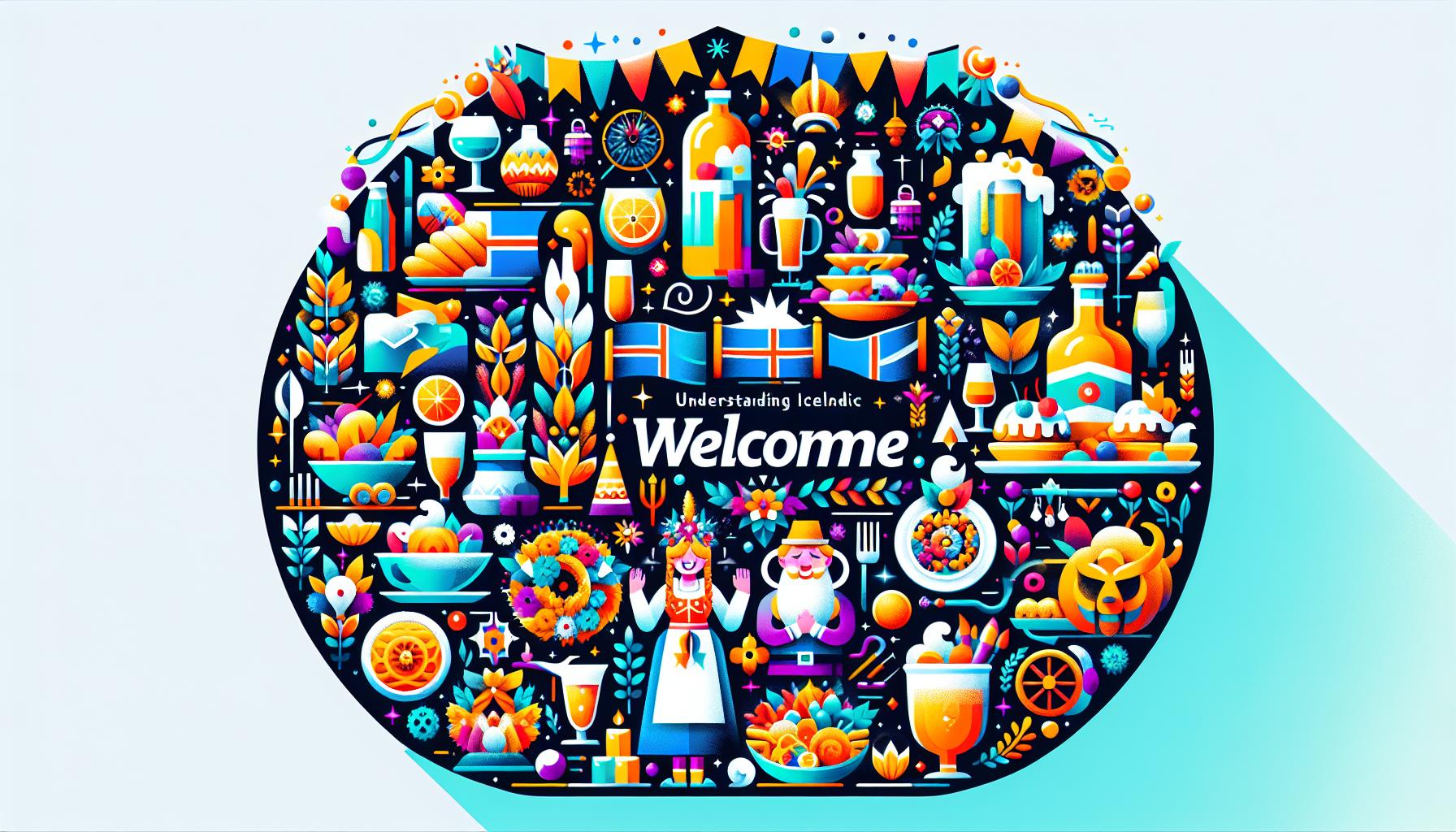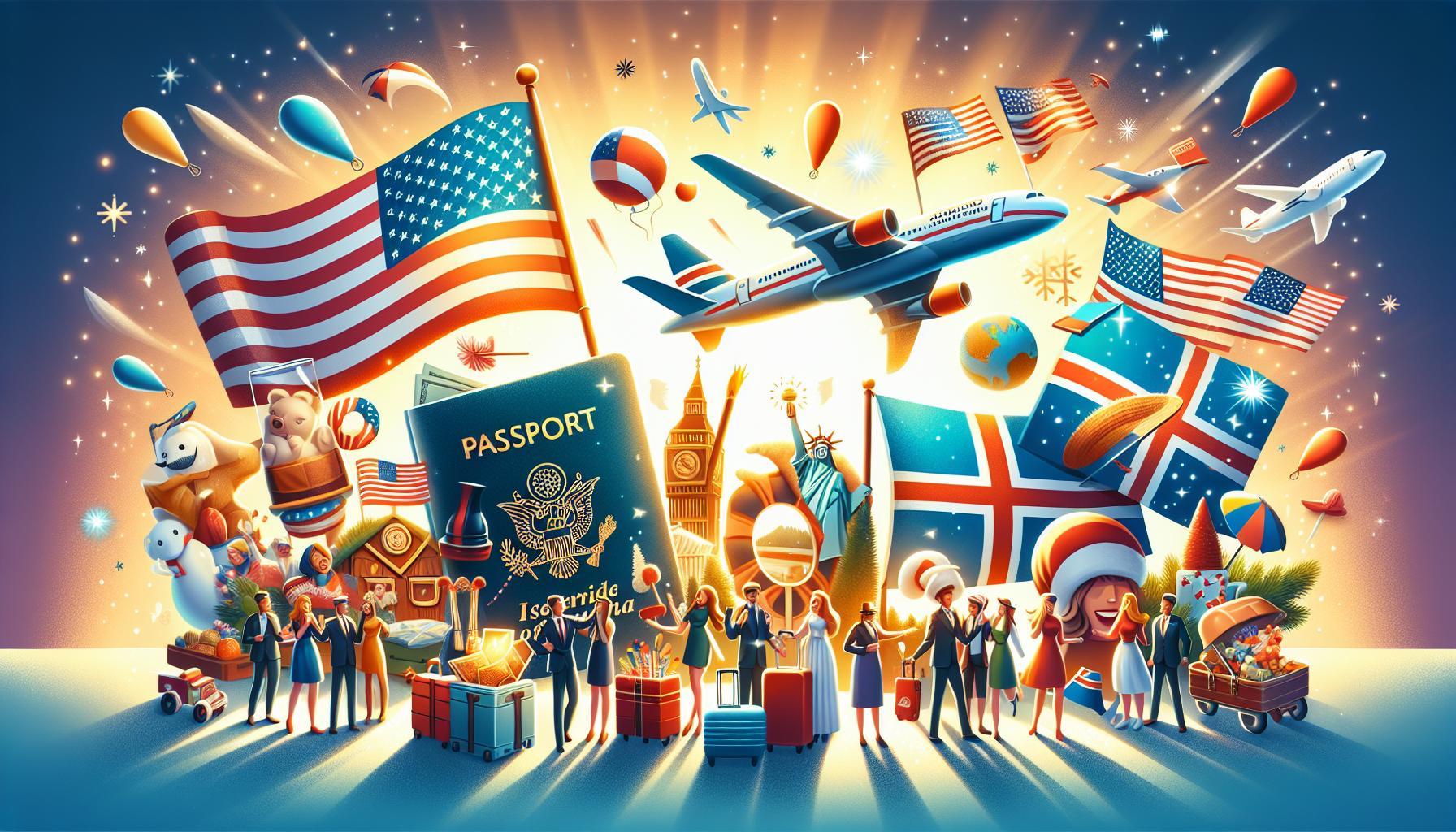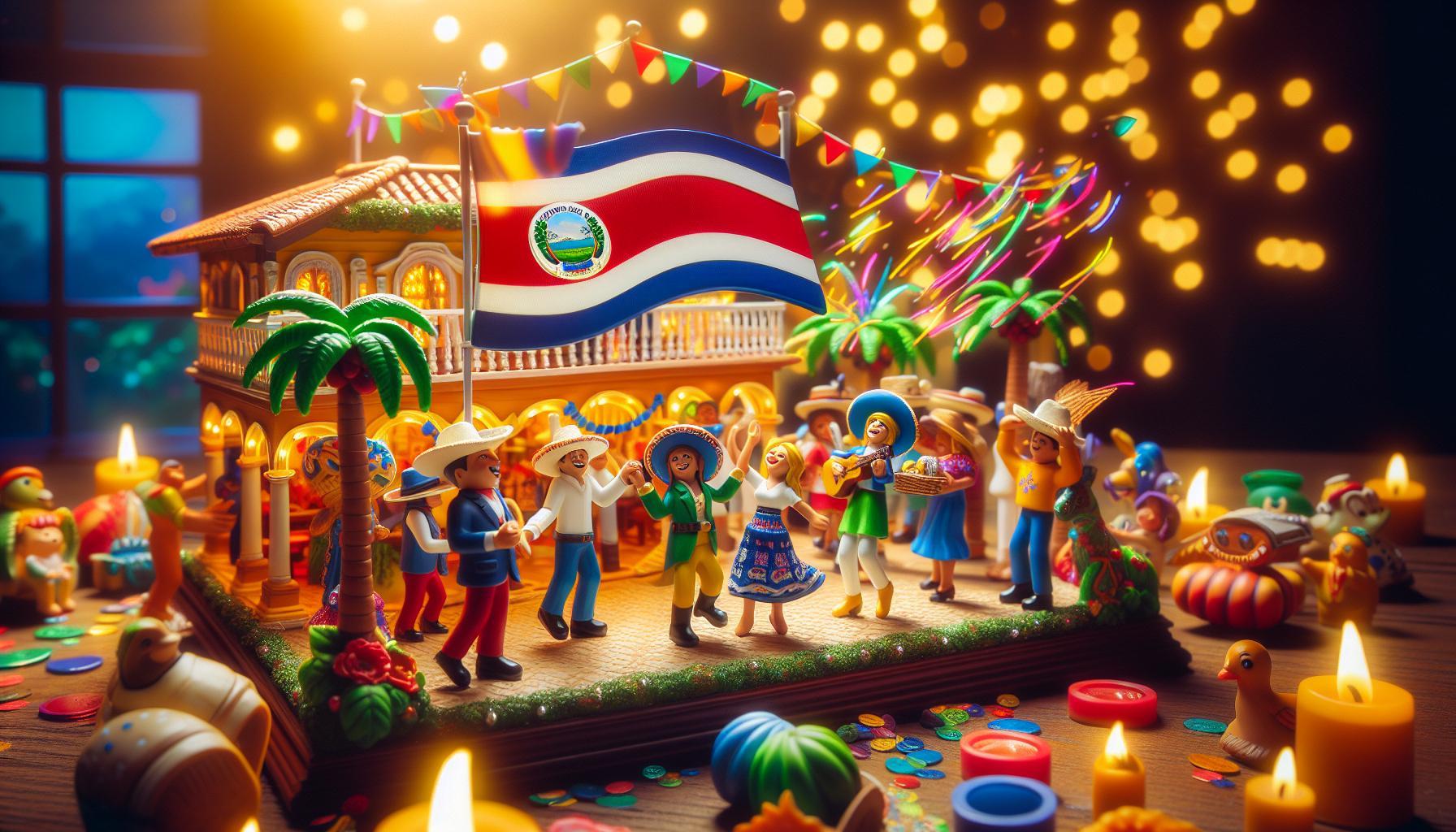Navigating cultural nuances can make or break your experience in a country as unique as Iceland. Understanding the local customs not only enriches your travels but also shows respect for the vibrant Icelandic heritage. This guide highlights essential do’s and don’ts to help you blend in and make meaningful connections during your stay.
Understanding Icelandic Customs: A Heartfelt Welcome

The moment you set foot in Iceland, you’re enveloped in a warm wave of hospitality that is ingrained in the fabric of Icelandic culture. This welcoming spirit is not just a mere cliché; it’s a genuine reflection of the values held dear by the people of this stunning island. Understanding and embracing the local customs can significantly enhance your experience and foster positive interactions with Icelanders.
A Friendly Greeting
One crucial aspect of interpersonal interactions in Iceland is the way greetings are handled. Typically, a firm handshake accompanied by a smile is the standard practice when meeting someone new. However, the Icelandic people also value personal touch, so adding a light hug or a kiss on the cheek among friends or acquaintances is quite common. This initial interaction sets a friendly tone, so don’t hesitate to initiate a cheerful “Halló!” or “Góðan daginn!” (Good day!). Familiarity is welcomed, and you might find that Icelanders are quick to share their first names even upon a first meeting, breaking down barriers that might exist in other cultures.
Embrace the Local Traditions
Including yourself in local customs can further enrich your experience. Here are some ways you can do this:
- Join a community event: Check local listings for festivals, concerts, or art exhibits that provide insights into Icelandic culture.
- Share a meal: If invited to a home, it’s customary to bring a small gift, such as flowers or a box of chocolates.
- Engage in storytelling: Icelanders have a rich tradition of storytelling; share your own tales or listen intently to theirs around the dinner table.
Understanding local traditions and participating in them can foster a deeper connection with your Icelandic hosts.
Etiquette in Social Settings
Navigating social gatherings also requires awareness of certain etiquettes. Here’s what to keep in mind:
| Do’s | Don’ts |
|---|---|
| Arrive on time; punctuality is appreciated. | Don’t rush through meals; take your time to savor the food and conversation. |
| Take part in toasts; it’s a sign of respect and camaraderie. | Avoid making negative comments about the weather; it’s a common topic among locals. |
| Offer compliments about the setting; Icelanders take pride in their natural beauty. | Don’t monopolize conversations; share the space so everyone can contribute. |
Interacting with courtesy and consideration can foster friendships and create a welcoming atmosphere. Whether you are exploring geothermal hot springs or wandering through vibrant streets, understanding these small yet significant customs can make your travels more immersive and enjoyable in this breathtaking country.
Embracing the Power of ‘Þetta Reddast’: A Resilient Mindset
In the icy embrace of Iceland, there’s a uniquely resilient mindset encapsulated in the phrase “Þetta Reddast,” which translates to a comforting belief that “it will all work out.” This optimistic outlook isn’t just a cultural quirk; it reflects a profound way of life that has been honed by centuries of navigating challenging landscapes and unpredictable conditions. As you absorb the essential insights from the ‘Do’s and Don’ts in Iceland: Essential Cultural Etiquette Guide,’ it’s crucial to understand how this philosophy informs social interactions and decision-making among Icelanders.
The Core of Resilience
At its heart, “Þetta Reddast” embodies the ability to confront adversity with a spirit of hope and practicality. Whether you’re facing a harsh winter storm or an unexpected hiccup in travel plans, this mindset encourages the community to rally together, offering support and solutions. If you find yourself in a tough spot during your visit, remember that embracing this outlook can lead to more positive interactions with locals, who appreciate and embody this adaptable mentality.
- Stay calm: If you encounter something unexpected, take a deep breath. Icelanders admire those who can maintain composure in the face of challenges.
- Ask for help: Don’t hesitate to reach out to locals. Their friendly nature means they’re often eager to assist you in finding a solution.
- Be flexible: Adapt your plans as needed. Whether it’s changing your itinerary due to weather or accepting a quirky hotel arrangement, the ability to roll with the punches is key.
Real-World Applications
In practical terms, this resilient mindset can be particularly beneficial when interacting with Icelandic culture. Here are ways to make the most of your experiences, drawing upon the essence of “Þetta Reddast”:
| Scenario | Response | Outcome |
|---|---|---|
| Missed a bus | Laugh it off and plan the next steps over coffee at a nearby café. | You might make new friends while you wait! |
| Weather cancellation of a tour | Consider alternative indoor activities or local attractions. | Discover hidden gems you may not have planned to see. |
| Lost your way | Engage a local for directions and share a friendly chat. | Gain insights into the local culture and perhaps even a new friend. |
By embodying “Þetta Reddast” during your journey, you not only embrace the Icelandic culture but also cultivate your own adaptable spirit. This resilient attitude fosters a sense of community and trust that is evident throughout the nation. As you navigate the do’s and don’ts while exploring this breathtaking landscape, let the power of this mindset guide your experiences and interactions, ensuring a more enriching and enjoyable adventure in Iceland.
The Art of Conversation: Engaging with Locals

Icelanders are known for their welcoming nature, which makes engaging in conversation with locals a delightful experience. The key to embracing the rich tapestry of Icelandic culture lies in the ability to hold a genuine dialogue. As you navigate your travel through this stunning land of ice and fire, understanding the nuances of conversation becomes essential.
Approaching Conversations
To foster meaningful interactions with Icelanders, here are some do’s and don’ts to keep in mind:
- Do be respectful and polite. Icelanders appreciate courtesy. A simple “hello” (halló) or “thank you” (takk) goes a long way.
- Don’t interrupt or talk over someone. It is considered rude to cut off a speaker. Allow them to finish their thoughts before you reply.
- Do show genuine interest. Ask locals about their traditions, culture, or recommendations for places to visit. This creates an engaging dialogue.
- Don’t delve into overly personal topics immediately. While Icelanders are generally open, it’s best to avoid sensitive subjects until you’ve built a rapport.
Common Topics to Discuss
When chatting with locals, steer toward subjects that resonate culturally and personally. The following topics can spark interesting conversations:
- Nature and Geography: Iceland’s spectacular landscapes are a favorite topic. Asking about local spots to marvel at the Northern Lights or visit hot springs can lead to enthusiastic exchanges.
- Literature and Arts: Iceland has a rich literary culture with a stunning mythological history. Inquiring about local authors, or their interpretation of ancient sagas can pique their interest.
- Food and Cuisine: Discussing Icelandic cuisine, such as fermented shark or skyr, can open doors to share recipes or personal favorites.
Reading the Room
Being observant and adaptable can enhance your conversational skills. Icelanders value authenticity; thus, it’s vital to gauge the atmosphere. For instance:
| Situation | Approach |
|---|---|
| In a Casual Setting | Light-hearted topics work well; feel free to share your experiences. |
| In Formal Settings | Be more reserved; stick to respectful questions and avoid slang. |
| Among Friends | Be candid and humorous; share anecdotes that resonate with the group. |
By understanding the art of conversation and adhering to the essential do’s and don’ts outlined in the ‘Do’s and Don’ts in Iceland: Essential Cultural Etiquette Guide,’ you will cultivate more enriching interactions. Your willingness to engage and learn from Icelanders will not only enhance your travel experience but also deepen your appreciation for this extraordinary culture.
Respecting Nature: Sustainable Practices in Iceland

Iceland’s breathtaking landscapes, from its majestic waterfalls to its rugged lava fields, are not only a feast for the eyes but also a testament to the importance of sustainable practices in preserving the environment. This island nation takes environmental stewardship seriously, promoting strategies that minimize ecological impact while maximizing cultural and natural preservation. As you explore the wonders of Iceland, understanding and respecting the local sustainable practices will enhance your experience and contribute positively to the enchanting environment around you.
One key aspect of sustainable living in Iceland is the extensive use of renewable energy. The country generates approximately 85% of its energy from geothermal and hydropower sources, making it one of the leaders in sustainable energy production globally. Visitors are encouraged to appreciate this commitment by using public transport and supporting eco-friendly tour operators that prioritize minimal environmental footprints.
- Use public transport: This reduces carbon footprints while allowing you to take in scenic views.
- Choose eco-friendly accommodations: Many hotels and lodges in Iceland incorporate sustainable practices like energy-efficient systems and waste reduction.
- Follow local guidelines: Stay on marked paths when hiking to protect vegetation and wildlife habitats.
- Limit plastic use: Opt for reusable water bottles instead of single-use plastics, as Iceland’s tap water is among the cleanest in the world.
Moreover, Icelandic culture places a significant emphasis on the concept of “Þjóðmenning,” which embodies the connection between the people and nature. Engaging in local practices such as participating in community clean-up days or visiting nature reserves can create a lasting, positive impact. Keep in mind that while enjoying the natural wonders, it’s crucial to adhere to the local guidelines concerning wildlife; for instance, maintain a respectful distance from nesting seabirds and never disturb natural sites.
Ultimately, embracing the “do’s and don’ts” of sustainable practices in Iceland not only reflects respect for the environment but also enriches cultural interactions during your journey. By engaging with Iceland’s eco-conscious ethos, you contribute to the preservation of the stunning landscapes that define this magnificent country, ensuring they remain vibrant for future generations to enjoy.
Dining Etiquette: From Traditional Dishes to Modern Cafés

Icelandic cuisine is a unique blend of traditional practices and modern influences, offering a rich tapestry of flavors and dining experiences. When it comes to eating in Iceland, understanding the local etiquette can enhance your culinary adventure, especially as you navigate between traditional dishes and contemporary cafés. Familiarizing yourself with the local customs not only shows respect for Icelandic culture but also deepens your appreciation for the exceptional gastronomy on offer.
Local dining etiquette begins with the concept of *Þorramatur*, a traditional platter featuring cured meats, fermented foods, and pickled delicacies enjoyed during the midwinter festival of Þorrablót. In settings where this delicacy is served, it’s important to appreciate the history and the rare ingredients, which often include items like fermented shark (*hákarl*) and ram’s testicles. When dining with locals, engaging in conversation about the dishes being served is encouraged; it showcases your interest and respect for Icelandic traditions.
Modern cafés in Iceland vibrate with a casual atmosphere, where table manners lean towards looseness, but some guidelines still apply. It’s customary to say *Takk fyrir* (thank you) when you conclude your meal. In more upscale settings, such as fine-dining restaurants, adhere to standard practices of placing napkins on your lap and waiting for everyone to be served before starting your meal. Interestingly, tipping is not obligatory, as service charges are generally included in the bill; however, rounding up the bill or leaving a small tip is appreciated.
For a clear understanding of the distinctions between formal and casual dining settings, consider the following table:
| Dining Setting | Etiquette Tips |
|---|---|
| Traditional Restaurant |
|
| Modern Café |
|
Understanding these nuances not only aids in navigating Iceland’s diverse dining scene but also helps you build meaningful connections with locals. By following the do’s and don’ts presented in our comprehensive guide to cultural etiquette in Iceland, you’ll find that dining here is not just about the food, but also about the experience of sharing stories and creating memories.
Dress Codes and Personal Space: Navigating Social Norms

In social settings, understanding dress codes and personal space can significantly enhance your interactions, especially in cultures with specific norms like Iceland. Adhering to appropriate attire not only reflects respect for local customs but also helps you seamlessly integrate into social environments. Icelanders value comfort and practicality, often opting for clothing that balances style and functionality—especially given the country’s unpredictable weather.
Understanding Dress Codes
In Iceland, the approach to dress codes is generally relaxed, but there are occasions where certain attire is expected. Here’s a quick guide to falling on the correct side of fashion in various situations:
- Casual Settings: Comfort reigns supreme. Jeans, sweaters, and waterproof jackets are common, reflecting the country’s outdoor lifestyle.
- Formal Events: While these are not as frequent, attendees typically dress smartly. Men may wear dress shirts and trousers, while women often choose dresses or smart separates.
- Outdoor Activities: Given Iceland’s rugged terrain, dressing in layers is wise. Sturdy footwear and weatherproof outerwear are essential for exploring the breathtaking landscapes.
Respecting Personal Space
Icelanders tend to have a distinct understanding of personal space. Though they are friendly and approachable, they appreciate a respectful distance when interacting. Personal space in Iceland is usually about an arm’s length; standing too close can be perceived as intrusive. To establish a comfortable rapport, take your cues from local interactions and adjust accordingly.
- When greeting, a simple handshake is common, and it’s polite to maintain eye contact.
- Compliments or small talk should remain casual—avoiding overly personal topics unless the relationship deepens.
- In group settings, be aware of body language; crossing arms or leaning back can communicate disinterest.
By mastering these elements of dress codes and personal space, you’ll navigate social norms in Iceland with ease. Remember, being mindful of these etiquettes can foster positive interactions and pleasant experiences while complementing the insights provided in the ‘Do’s and Don’ts in Iceland: Essential Cultural Etiquette Guide.’
Celebrating Festivals: Joining in Icelandic Traditions
Iceland boasts a vibrant tapestry of festivals that reflect its rich cultural heritage and community spirit. Participating in these celebrations is not only a fantastic way to experience the local culture but also an essential element of forging genuine connections with the Icelandic people. Understanding the traditions and customs surrounding these festivities can enrich your travel experience and ensure that you adhere to the Do’s and Don’ts in Iceland: Essential Cultural Etiquette Guide.
Key Festivals to Experience
Throughout the year, Iceland hosts numerous festivals, each with its unique charm and significance. Here are a few highlights:
- Þorrablót: Celebrated in January and February, this midwinter festival showcases traditional Icelandic foods, including fermented shark and sheep’s head. Participating in Þorrablót means immersing yourself in customs that stretch back to Viking times.
- Reykjavik Culture Night: Held every August, this vibrant event celebrates the cultural scene of Reykjavik with street performances, art exhibitions, and a more general festive atmosphere. It’s an excellent opportunity to meet locals and experience the city’s artistic side.
- Jólasveinar (Yule Lads): The Icelandic Christmas tradition features 13 mischievous Yule Lads who visit homes during the holiday season. Engaging in local Christmas markets and participating in festive events during December is a must for any traveler.
- Sumardagurinn Fyrsti: The First Day of Summer, celebrated in April, represents a pivotal point in Icelandic culture, marking a time for renewal and outdoor festivities. Many towns host parades, concerts, and activities that embrace the arrival of warmer weather.
Etiquette Practices to Honor
When joining in these festivities, certain etiquettes can significantly enhance your experience. Not only will they show respect for the local culture, but they might also make your interaction with the locals more rewarding.
| Do’s | Don’ts |
|---|---|
| Participate in local traditions and be open to trying traditional foods. | Avoid dismissive comments about local customs or food. |
| Engage with locals; they appreciate visitors who show interest. | Don’t interrupt or dominate conversations; listen actively. |
| Respect cultural dress codes, especially during specific festivals. | Don’t wear clothing that could be considered disrespectful or overly casual. |
| Ask for permission before taking photographs of people during celebrations. | Don’t photograph locals at events without their consent. |
Embracing Iceland’s festive spirit while adhering to these guidelines allows you to celebrate authentically. By understanding the Do’s and Don’ts in Iceland: Essential Cultural Etiquette Guide, you will not only honor the culture but also create unforgettable memories that last a lifetime.
Communicating Politeness: Language Tips for Travelers
Navigating the waters of communication in a foreign country can be a delightful yet daunting experience, especially in a unique cultural environment like Iceland. Politeness is an integral part of the social fabric, and understanding language nuances can help travelers forge meaningful connections. While Icelanders are typically fluent in English, expressing yourself with local courtesy can greatly enhance interactions and demonstrate respect for their culture.
Essential Phrases to Use
Arming yourself with a few key phrases in Icelandic not only showcases your interest in the local culture but can also earn you extra respect. Here are some useful expressions to incorporate into your conversations:
- Hallo – Hello
- Takk – Thank you
- Fyllt þig með – Excuse me
- Já – Yes
- Nei – No
Using these greetings not just opens the door for polite conversation; it also reflects a willingness to engage with their language. When meeting someone for the first time, a friendly smile combined with a “Hallo” can set a positive tone.
Practice Active Listening
Politeness in communication isn’t solely about the words you speak; it also encompasses your ability to listen actively. When engaging with locals, offering your full attention shows respect and genuine interest. Here are a few tips to ensure effective interaction:
- Maintain eye contact to show attentiveness.
- Use nods and verbal affirmations like “Já” or “Já, ég skil” (Yes, I understand) to encourage the speaker.
- Avoid interrupting; wait for pauses before responding.
Active listening cultivates rapport and helps you grasp complexities within the conversation, ensuring you leave with a better understanding of Icelandic perspectives.
Understanding Local Customs
Politeness also means being aware of local customs that influence communication. Icelanders appreciate directness but expect a level of warmth. For instance, it’s polite to ask about someone’s day or showing appreciation directly after a service.
| Custom | Expectation |
|---|---|
| Giving gifts | It’s common in casual settings but not obligatory. |
| Using first names | Icelanders typically use first names; formal titles are rarely used. |
| Thanking service workers | A simple “Takk” is often expected and appreciated. |
By embodying these customs, you not only show respect but also integrate yourself more fully into the local way of life. Whether you are dining, shopping, or simply enjoying the splendid Icelandic landscape, using these language tips and cultural insights transforms your travels into a more immersive and rewarding experience.
Tipping and Payment Practices: What You Need to Know
When traveling to a new country, understanding local payment customs can significantly enhance your experience. In Iceland, tipping is not a common practice and might leave visitors perplexed. The cultural etiquette surrounding tipping and payment methods is essential knowledge for any traveler wishing to immerse themselves in Icelandic customs and behaviors.
Understanding Tipping Culture
In Iceland, service charges are typically included in your bill at restaurants and for taxi rides, which means there is no pressure or expectation to tip. However, if you feel that the service was exceptional, leaving a small 5-10% gratuity can be appreciated but is certainly not required. This approach stands in stark contrast to other countries where tipping is a mandatory part of dining out or using services.
- Restaurants: Most establishments will include service in the final bill. Consider rounding up to the nearest Icelandic króna if you wish to express your satisfaction.
- Taxis: Gratuity is generally not expected. However, rounding the fare up is a nice gesture if the driver provides a friendly service.
- Hotels: Like restaurants, hotel staff do not expect tips, though it can be a pleasant surprise if you leave a little something for housekeeping or concierge services.
Payment Methods: Varieties and Preferences
Icelanders primarily use credit cards for most transactions, even for small purchases. It’s common to pay with a card at grocery stores, cafes, and even attractions. Visitors should ensure their cards are compatible with the chip-and-PIN systems used widely across the country.
| Payment Method | Common Uses | Notes |
|---|---|---|
| Credit/Debit Cards | Restaurants, shops, taxis | Easily accessible and widely accepted |
| Cash | Small purchases, markets | Less common, but some small vendors may require it |
| Mobile Payments | Various transactions | Increasingly popular among younger generations |
To fully enjoy your Icelandic adventure, it’s essential to navigate these payment practices smoothly while embracing the local customs regarding tipping. By following these straightforward guidelines from the “Do’s and Don’ts in Iceland: Essential Cultural Etiquette Guide,” you’ll showcase your respect for Icelandic culture, making your travels even more enriching.
Frequently Asked Questions
What are the crucial do’s and don’ts in Iceland?
When visiting Iceland, essential do’s include respecting nature, greeting locals with a smile, and always keeping to designated paths. Key don’ts involve avoiding littering, refraining from walking on fragile vegetation, and not engaging in loud behavior in public.
Due to Iceland’s unique landscapes and sensitive ecosystems, it’s vital to embrace sustainable tourism practices. For example, when hiking, stick to marked trails to protect the natural habitats. Not only does this respect the environment, but it ensures safety for everyone enjoying Iceland’s stunning outdoors. Always carry out what you carry in!
Can I take photos of locals in Iceland?
Yes, you can take photos of locals, but always ask for permission first. Many appreciate being asked, and it shows respect for their privacy.
Icelanders are generally friendly, and you’ll find that many are happy to share a moment. A good rule of thumb is to engage in conversation first; it often leads to a candid, beautiful shot. Remember, respect goes a long way!
Why does greeting locals matter in Iceland?
Greeting locals is an important part of Icelandic culture, reflecting friendliness and creating a welcoming atmosphere. Simple greetings like “Halló” or “Góðan daginn” can go a long way.
Icelanders pride themselves on community and connection. Engaging in small talk can lead to meaningful exchanges and eases interactions. Embracing this cultural norm enhances your travel experience and fosters mutual respect.
What is considered proper dining etiquette in Iceland?
Proper dining etiquette in Iceland includes waiting for the host to start the meal and usually finishing everything on your plate, as this symbolizes appreciation. Tipping is less common but appreciated for great service.
Meals often begin with ‘rauki’ or rye bread, and local specialties like lamb or seafood shouldn’t be missed. Make sure to thank your host and consider sharing stories about your travels in return for the hospitality.
Do I need to worry about dress codes in Iceland?
Icelanders generally have a casual dress code, focusing on warmth and practicality over formality. When exploring, prioritize layers and functional clothing suited for unpredictable weather.
During visits to restaurants or more upscale venues, wearing smart casual attire is wise, yet you won’t need to dramatically change from day to night. A good rule: if it’s comfortable and fits the climate, it’s likely acceptable!
Can I use my smartphone during conversations in Iceland?
While it’s common to have your smartphone handy, using it during conversations can be seen as disrespectful. Icelanders value face-to-face interactions, so it’s best to focus on the conversation.
Put your phone away when chatting. This shows you value the person you’re speaking with and creates a more engaging dialogue. Shared stories and laughs create lasting memories and impressions!
What are some local customs I should know about?
Local customs include respecting personal space, understanding that discussions can be direct and candid, and participating in social events like the Þorrablót, a traditional midwinter festival.
Embracing local customs enriches your Icelandic experience. Festivals are vibrant with traditional food, music, and dance—a great way to connect with the community. Exploring these customs brings a deeper appreciation for Icelandic heritage.
In Summary
As you prepare for your Icelandic adventure, remember that understanding the do’s and don’ts of local etiquette can transform your journey from ordinary to extraordinary. Picture yourself wandering through the vibrant streets of Reykjavik, where the laughter of locals mingles with the salty sea breeze—or standing in awe beneath the Northern Lights, feeling a profound connection to the ancient land and its rich heritage.
Remember to greet with a warm “Halló,” respect the diverse customs of the people, and embrace the stunning landscapes without leaving a trace. Avoid the temptation to rush; instead, savor the moments, whether that means sharing a cozy meal of lamb soup with a new friend or soaking in the rejuvenating waters of the Blue Lagoon while exchanging travel tales with fellow explorers.
Iceland is more than just a destination—it’s a living tapestry of culture and community. Engage with locals, listen to their stories, and immerse yourself in the spirit of this captivating island. With these guidelines in your back pocket, you’re not just visiting; you’re joining a vibrant culture.
So pack your bags, keep an open heart and mind, and let the magic of Iceland unfold before you! Explore further, connect deeply, and let every experience enrich your journey. The land of fire and ice awaits you—step into its wonders with confidence and curiosity!






